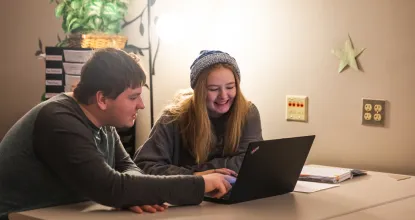Apostrophes are used in two ways: to show possession and to show the omission of letters.
To show possession
To see if you have a possessive, turn the phrase around and make it an "of the…" phrase.
For example:
the boy's hat = the hat of the boy
To place the apostrophe correctly to show possession
- add 's to the singular form of the word (even if it ends in –s): the owner's car
- add 's to the plural forms that do not end in –s: the children's game
- add ' to the end of plural nouns that end in –s: the three friends' letters
- add 's to the end of compound words: the brother-in-law's money
- add 's to the last noun to show joint possession: Todd and Anna's apartment
To show omission of letters
In contractions one or more letters (or numbers) have been omitted, and the apostrophe shows this omission. Contractions are common in speaking, dialogue, and informal writing.
For example:
I'm = I am
he'll = he will
don't = do not
'60s = 1960s
who's = who is
can't = cannot
Do not use apostrophes for possessive pronouns like his, her, its, yours, and ours.
Do not use apostrophes to make nouns plural.
